MARCIUS GALAN: Mechanics of Continuous Media
Drawings to Organize Pessimism
In a dark room, we observe two points of light moving through space. The scene resembles the flight of fireflies, the small insects that have practically disappeared from large cities, as their faint and intermittent glow requires deep darkness. To create Cinema (2025), Marcius Galan turned Galeria Luisa Strina into complete darkness. In this work, the minimal unit of drawing—the point—exists as the minimal unit of cinema—light. The wandering flashes, though seemingly random, project a continuous flow while simultaneously providing reference points for the scale and shape of the space.
The philosopher and art historian Georges Didi-Huberman recounts that the glow of five thousand fireflies is equivalent to the amount of light from a single candle (1). Their luminescence is a form of amorous communication, a call for mating. They shine to attract partners. In a way, darkness produces a sense of coziness, welcoming and disarming. Cinema exists as a flight into the void of the gallery. The work is also a tribute to Pier Paolo Pasolini, who created a powerful image of fireflies in 1941, during World War II, when he was studying literature in Bologna. In a letter to a friend, the poet compares the joyful and erratic existence of these insects to art and poetry, seeing them as a vital alternative to the dark times grotesquely illuminated by fascist propaganda. This metaphor is the driving force behind the book Survival of the Fireflies, in which Didi-Huberman discusses the dialectical relationship between historical consciousness and pessimism, ethics and fragility in times of veiled or explicit fascism. In the text, completed in 2008 but strikingly relevant today, the author argues that one must not be content with merely describing barbarism.
In Mechanics of Continuous Media, Galan draws in space, on nature, and with it. The exhibition title refers to the branch of physics that studies the movement and deformation of bodies—a field of knowledge that deals with time and invisible forces such as magnetism and gravity. Geometry provides the vocabulary of shapes and gestures from which the artist acts upon materials of natural or industrial origin. The works speak of the often faltering way in which the human species inhabits the passage of time. They result from forces of varying rhythm and intensity acting upon bodies that resist according to their own constitution. The idea of resistance is not limited to physical barriers. It refers to resilience, stubbornness, and the drive that propels Galan’s precise and deliberate gestures.
Infinity (1999), a glass tube shaped into a figure-eight, is obstructed by a wax nodule. The inherent optimism of science, test tubes, and clinical analyses is blocked and deformed. The symbol of time’s fluidity is transformed into a clogged vein, suggesting that something is amiss in the course of history. The clot in Infinity contrasts with the unstable persistence portrayed in Counterclockwise (2025). The film depicts a plant filament behaving like a compass, moved by the force of the wind. Despite its fragility, the small twig carves two perfect circles into a rough sandy surface. It resembles the hand of a clock or the needle of a record player, sometimes advancing, sometimes retreating. When the hand moves counterclockwise, we hear a distorted sound. The image of an arc drawn with a compass recurs in the artist’s other works, almost always tied to the idea of violence and transgression—a gesture made with a hard instrument that scratches perfectly polished, artificial surfaces typical of urban contexts. In Counterclockwise, the compass hangs by a thread, its movement trembling and hesitant, discontinuous and noisy.
In contrast to the absence of light in the first space, the second room of the exhibition presents a series of large-scale works, displayed in full light, made of hard and heavy materials. Two stones, together weighing about a ton, were transported from Bahia and Minas Gerais to form Geological Memory (2025). These fragments of mountains, symbols of permanence, are encircled by two steel lines pointing toward each other in an arrow-like shape, yet never touching. The wires trace a force of attraction that acts slowly and silently, to the point of creating creases in the stones. In the piece Resultant Force (2025), another mark made in space suggests an overwhelming magnetic force defying gravity. A line of iron, drawn toward a nail in the wall, holds a wooden rod in a falling position. The wire and the nail do not touch either. The void between them creates a tense equilibrium. At any moment, there is the possibility that the attraction will fail and everything will collapse.
In the same brightly lit room, two large-scale panels suggest landscapes that are both cosmic and mundane. Orbital (2025) features four stones—this time, mining discards—arranged on a sleek black surface painted with automotive paint. The work dialogues with Counterclockwise and other pieces by the artist. The stones function as a gravitational force around which sharp objects orbit, aggressively scratching the surface and tracing semicircles with the precision of a compass.
Low Resolution (2025) is, in a way, both a pleonasm and a paradox. The work alludes to the aerial view of a wildfire, composed of thousands of small cubes of charcoal and wood, while simultaneously evoking pixelated images that spread like fire across the internet. However, the porous materiality of these carbon pixels is the opposite of the minimal unit of light that forms a digital image. The work is an extension of research Galan has been conducting for years, in which he juxtaposes small cubes of charcoal and rubber, creating a tension between the virtual existence of a drawing and its potential erasure. Far from the luminosity of digital technology, the expansion of the black area in Low Resolution is meticulously planned. Only combustion could grant it any shine.
At a time when new tyrants seek to intimidate any form of dissent at all costs, Marcius Galan presents us with a collection of works that explore different forms of resistance. Oscillating between the acceptance and rejection of the laws of physics, Mechanics of Continuous Media is a solitary protest—a way of organizing pessimism, as Walter Benjamin once advocated. Imagining supernatural forces driven by the desire to project new configurations of the world is a subtle form of political action and a rejection of barbarism (2).
Heloisa Espada
1) Georges Didi-Huberman. Sobrevivência dos vaga-lumes. Belo Horizonte: Editora da UFMG, 2011, p. 52.
2) Benjamin quoted by Didi-Huberman, op. cit., p. 118.

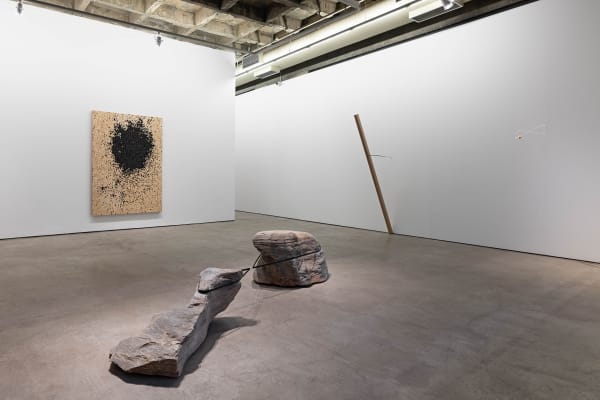
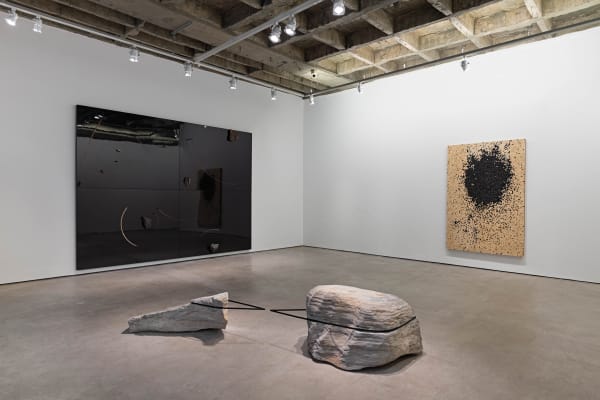
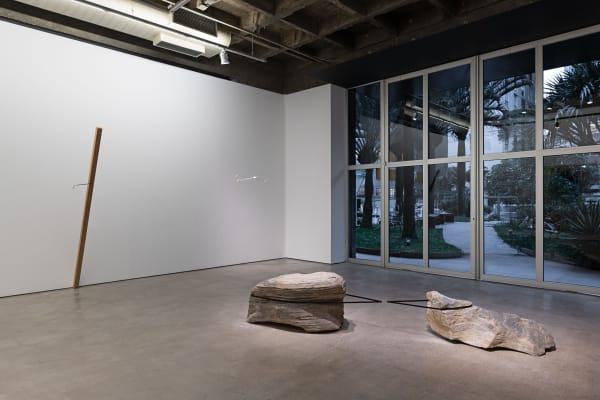
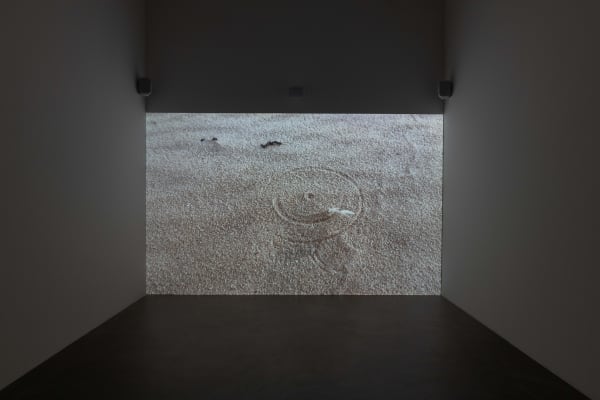
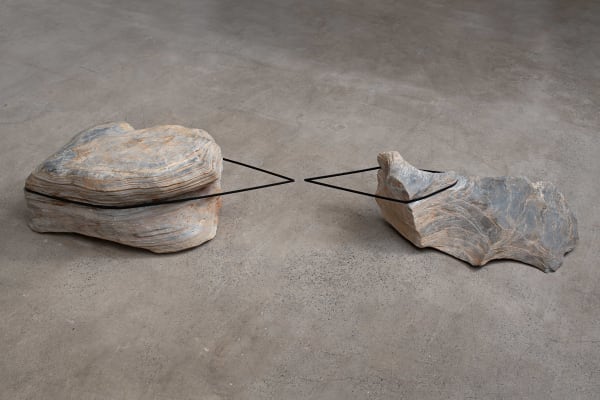
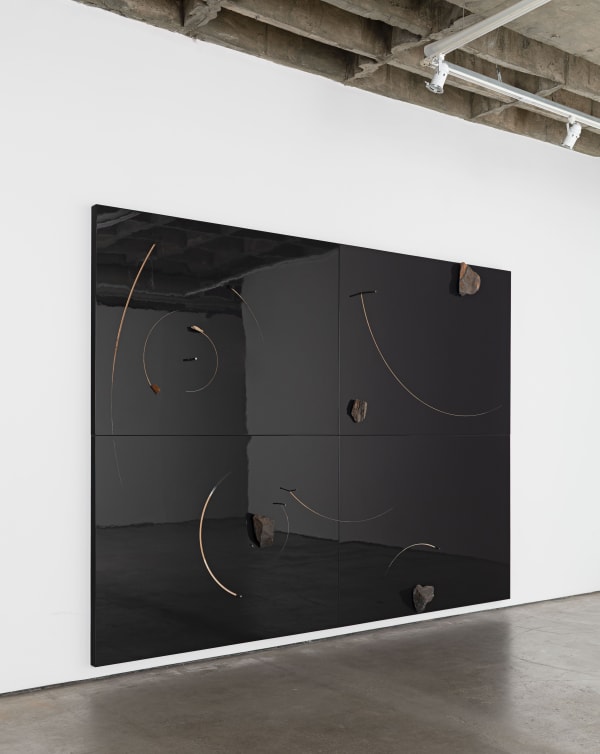
![Marcius Galan Baixa resolução, 2025 madeira e carvão [wood and charcoal] 220 x 160 x 7 cm 86 5/8 x 63 x 2 3/4 in Ph: Estúdio em obra](https://artlogic-res.cloudinary.com/w_600,c_limit,f_auto,fl_lossy,q_auto/ws-galerialuisastrina/usr/exhibitions/images/exhibitions/273/250226_luisa_strina_118.jpg)
![Marcius Galan Bang (baixa resolução), 2025 madeira e carvão [wood and charcoal] 80 x 61 x 5.5 cm 31 1/2 x 24 x 2 1/8 in Ph: Edouard Fraipont](https://artlogic-res.cloudinary.com/w_600,c_limit,f_auto,fl_lossy,q_auto/ws-galerialuisastrina/usr/exhibitions/images/exhibitions/273/marcius_galan1-edouardfraipont20032025mid.jpg)
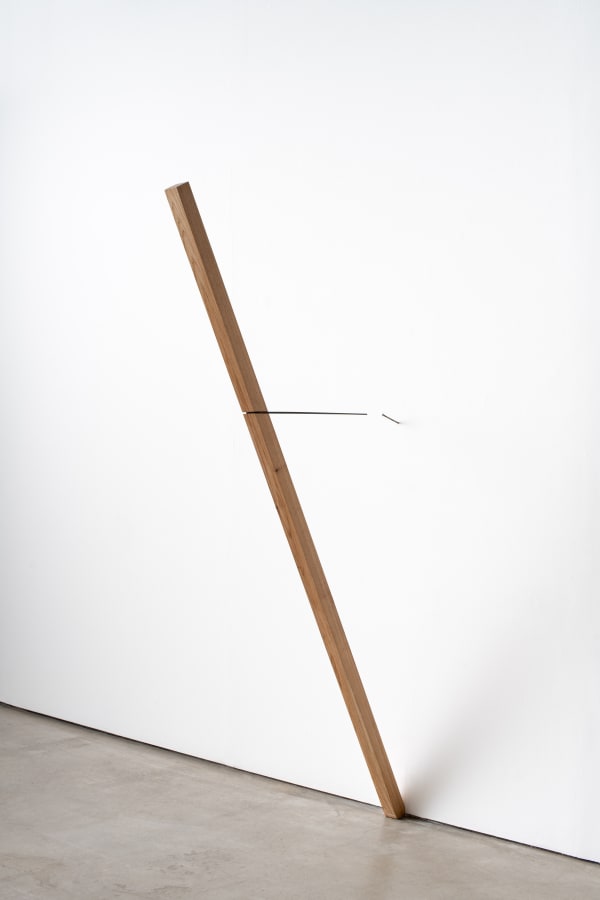
![Marcius Galan Infinito, 1999 vidro, cera de abelha e carnaúba [glass, beeswax and carnauba wax] 13 x 63 x 5 cm 5 1/8 x 24 3/4 x 2 in Ph: Estúdio em obra](https://artlogic-res.cloudinary.com/w_600,c_limit,f_auto,fl_lossy,q_auto/ws-galerialuisastrina/usr/exhibitions/images/exhibitions/273/250226_luisa_strina_148.jpg)
![Marcius Galan Cinema, 2025 65 lâmpadas programáveis [65 programmable lamps] dimensões variáveis [variable dimensions] Ph: Edouard Fraipont](https://artlogic-res.cloudinary.com/w_600,c_limit,f_auto,fl_lossy,q_auto/ws-galerialuisastrina/usr/exhibitions/images/exhibitions/273/marcius-galan_cinema_2025_detalhe_ft_edouard-fraipont.jpg?focal=51,64)
![Marcius Galan Anti-horário, 2025 vídeo colorido, som [coloured video, sound] dimensões variáveis [variable dimensions]](https://artlogic-res.cloudinary.com/w_600,c_limit,f_auto,fl_lossy,q_auto/ws-galerialuisastrina/usr/exhibitions/images/exhibitions/273/screen-shot-2025-03-28-at-12.03.55.png)
